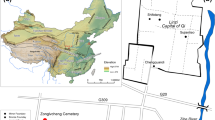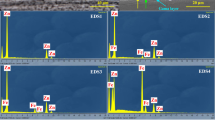Abstract
Measurements play an important role in technical field, construction, engineering sectors and in day-to-day activities. The accurate and precise measurements are crucial for scientific and industrial fields. Accuracy and precision in measurements eliminate chaos and encourage novelties which would help to save valuable lives, time and resources. To get accurate and precise measurement, calibration of sophisticated instruments is mandatory. For calibration of these complicated instruments, Certified Reference Materials (CRMs) will help to identify the non-performance of instrument and using this, one can ensure to get accurate and precise data. National Physical Laboratory, India (NPLI) is maintaining the primary and secondary standards and realization of “National Standard” and distribution of measurement traceability to national accreditation bodies and industries. Bharatiya Nirdeshak Dravya (BND®) division of NPLI is continuously working for the development of various Indian Reference Materials (IRMs) in different sectors. This unbroken chain of traceable measurements improves confidence level in the international trade. In present article, we are going to discuss about the role of BNDs for calibration of sophisticated instruments and quality assurance of products.


Similar content being viewed by others
References
A. Menditto, M. Patriarca, and B. Magnusson, Understanding the Meaning of Accuracy, Trueness and Precision, Accred. Qual. Assur., 12 (2007) 45–47.
W.M. Stallings and G.M. Gillmore, A Note on ‘‘Accuracy’’ and ‘‘Precision’’, J. Educ. Meas., 8 (1971) 127–129.
J. P. Fanton, A brief history of metrology: past, present, and future, Int. J. Metrol. Qual. Eng., 10 (2019) 1-8.
F. de Medeiros Albano and C.S. ten Caten, Analysis of the relationships between proficiency testing, validation of methods and estimation of measurement uncertainty: a qualitative study with experts, Accred. Qual. Assur., 21 (2016) 161–166.
F.M. de Albano and C.S. ten Caten, Proficiency tests for laboratories: a systematic review, Accred. Qual. Assur., 19 (2014) 245–257.
M. Rutkowska, J. Namies´nik, and P. Konieczka, Production of certified reference materials – homogeneity and stability study based on the determination of total mercury and methyl mercury Microchem. J., 153 (2020) 104338.
A. B. Shehata, M. S. Rizk, A. M. Farag, and I. F. Tahoun, Certification of three reference materials for a- and c-Tocopherol in Edible Oils, Mapan-J. Metrol. Soc. I., 29 (2014) 183-194.
A. B. Shehata, R. N. Yamani, and I. F. Tahoun, Intra- and interlaboratory approach for certification of reference materials for assuring quality of low-alloy steel measurement results, Mapan-J. Metrol. Soc. I., 34 (2019) 259-266.
G. H. White, Metrological traceability in clinical biochemistry, Ann. Clin. Biochem., 48 (2011) 393–409.
S. Trapmann, A. Botha, T. P. Linsinger, S. Mac Curtain and H. J. A. Emons, The new International Standard ISO 17034: general requirements for the competence of reference material producers, Accred. Qual. Assur., 22 (2017) 381–387.
D. K. Aswal, Metrology for inclusive growth of India (Springer Singapore), (2020).
O. N. Velichko, Calibration and measurement capabilities of metrological institutes: features of preparation, examination, and publication, Meas. Tech., 53 (2010) 721–726.
J. Pauwels, A. Lamberty and H. Schimmel, The determination of the uncertainty of reference materials certified by laboratory intercomparison, Accred. Qual. Assur., 3 (1998) 180–184.
M. Ihnat and M. Stoeppler, Preliminary assessment of homogeneity of new candidate agricultural/food reference materials, Fresenius J. Anal. Chem., 338 (1990) 455–460.
T. P. J. Linsinger, J. Pauwels, A. M. H. van der Veen, H. Schimmel and A. Lamberty, Homogeneity and stability of reference materials, Accred. Qual. Assur., 6 (2001) 20–25.
Acknowledgements
The authors are thankful to Director, CSIR- NPL for his continuous encouragement and motivation. One of the authors Manju Kumari is thankful to CSIR for giving financial assistance through CSIR-Senior Research fellowship (SRF) and AcSIR-NPL for PhD registration.
Author information
Authors and Affiliations
Corresponding author
Additional information
Publisher's Note
Springer Nature remains neutral with regard to jurisdictional claims in published maps and institutional affiliations.
Rights and permissions
About this article
Cite this article
Kumari, M., Vijayan, N., Nayak, D. et al. Role of Indian Reference Materials for the Calibration of Sophisticated Instruments. MAPAN 37, 505–510 (2022). https://doi.org/10.1007/s12647-022-00543-8
Received:
Accepted:
Published:
Issue Date:
DOI: https://doi.org/10.1007/s12647-022-00543-8




